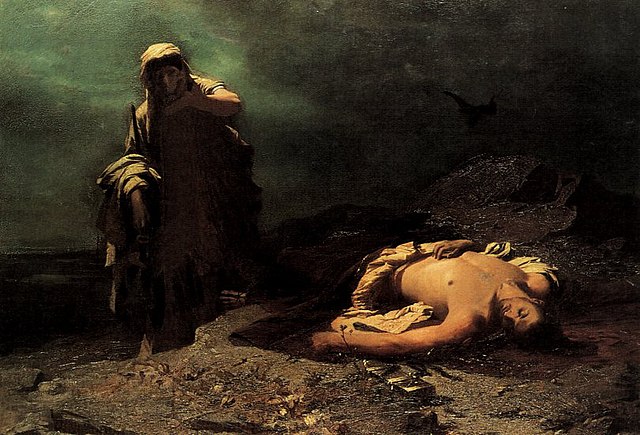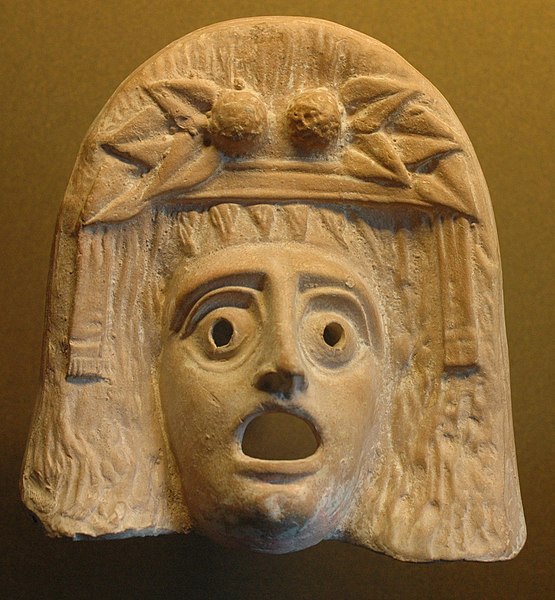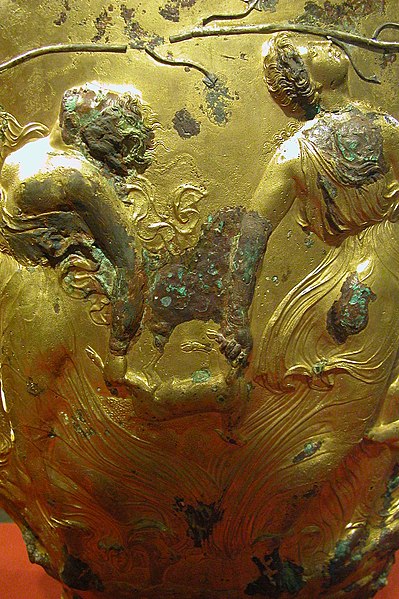Antigone (Sophocles play)
Antigone is an Athenian tragedy written by Sophocles in 441 BC and first performed at the Festival of Dionysus of the same year. It is thought to be the second oldest surviving play of Sophocles, preceded by Ajax, which was written around the same period. The play is one of a triad of tragedies known as the three Theban plays, following Oedipus Rex and Oedipus at Colonus. Even though the events in Antigone occur last in the order of events depicted in the plays, Sophocles wrote Antigone first. The story expands on the Theban legend that predates it, and it picks up where Aeschylus' Seven Against Thebes ends. The play is named after the main protagonist Antigone.
Antigone in front of the dead Polynices by Nikiforos Lytras 1865
Antigone being captured and arrested for the burial of her brother, Polynices. Sébastien Norblin, 1825.
Greek tragedy is one of the three principal theatrical genres from Ancient Greece and Greek inhabited Anatolia, along with comedy and the satyr play. It reached its most significant form in Athens in the 5th century BC, the works of which are sometimes called Attic tragedy.
Mask of Dionysus found at Myrina (Aeolis) of ancient Greece c. 200 BC – 1 BC, now at the Louvre
Maenads dancing, bringing a sacrificial lamb or kid
Dionysus surrounded by satyrs. Attic red-figured cup interior, 480 BC.
Aeschylus






